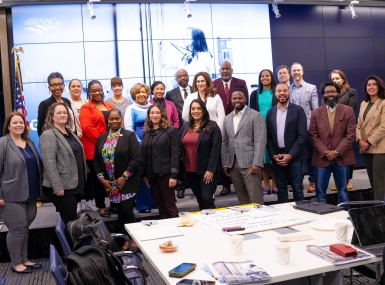California faces primary confusion
Upcoming Events
Related News
County registrars see voting challenges ahead of primary
For all of California’s size and population, its presidential primary has rarely mattered much — coming so late in the year as it does, this year on June 7. By that time, it’s usually pretty clear which candidates have enough delegates to clinch their party’s nomination.
But, not so this year, the Golden State could actually be a decisive factor in the Republican race, in terms of which candidate has enough delegates to avoid a contested convention.
California county election officials expect to see surges in voting similar to what other states have witnessed. In the first three months of this year, some 600,000 individuals have registered to vote or updated their registration online, according to Alex Padilla, California’s secretary of state.
That, however, may be the least of the problems that the state’s 58 county election directors face in this stranger-than-fiction primary cycle. Between now and May 23 — the voter registration deadline, and two weeks before primary day — counties will also be verifying millions of signatures on petitions for propositions that will appear on the November ballot.
Orange County Registrar of Voters Neal Kelley said a dozen potential statewide measures that are in circulation will be delivered to election officials’ offices en masse — while they’re in the midst of preparing for the June primary. That’s because of a 2011 change is state law that moved all initiative and referendum measures, except for those written by the legislature, to the November general election in even-numbered years.
“The downside of that is that we mail out vote-by-mail ballots on May 9; the last-minute planning for the election goes all the way through Election Day, and then we’re obviously processing ballots close to when those petitions hit (around May 20),” said Kelley, who is also president of the California Association of Clerks and Elections officials. “So it’s the perfect storm, everything’s coming in at the same time.”
If that storm could be perfected even more, add to that confusion among the electorate about who they can vote for and a crowded slate for a U.S. Senate race.
There is so much variability in California from election to election that there’s little wonder that voters can become confused, said Shasta County registrar Cathy Darling Allen.
Unlike the state’s gubernatorial open primaries — where the top two vote-getters, regardless of party, advance to the November election — Allen said of the presidential primary, “This one election every four years, it’s different, and [voters’] party affiliation matters. And so explaining that to folks — and explaining the why it’s not our fault. We don’t make the rules.” The political parties do.
“We spend a lot of time doing that, and it really is very time-consuming, and it doesn’t make a lot of sense. This is not a logical, intuitive system that you can explain in 30 seconds or less.”
Further complicating matters this year: 34 candidates are vying for the U.S. Senate seat being vacated by Barbara Boxer (D). Allen said that for many counties, it’s possible that with so many candidates, ballots may have to list them in two columns — possibly leading voters to believe they can vote for more than one candidate (if they do, their vote won’t count).
Her county will be able to present all the candidates in a single column on one page. “Other counties maybe don’t have the flexibility within their voting systems to do that,” she added. “So they’re spending a lot of time and energy making sure folks understand how to mark their ballots so their votes will count.”
In the meantime, the surge in voters, the overtime needed to plan and conduct an election while verifying signatures for propositions will inevitably add to county election costs.
Padilla, the secretary of state, has asked the California Legislature to find additional funds for counties. He wrote in a letter to Gov. Jerry Brown (D): “…elections officials will face higher than average costs…. Also counties must print additional ballots and ensure that polling places have adequate ‘crossover ballots’ on hand for those parties that conduct open primaries.”
The Legislature is considering a $16.2 million package to help the counties. Allen said this includes money to reimburse counties for its “activities around initiative petitions.”
“We’ve seen in states across the country that there has been confusion over closed primaries and open primaries and modified primaries,” Kelley said. “We’re working hard as a group of registrars to get the word out to make sure voters are educated about their choices and what they can do on Election Day.”
Attachments
Related News

County Countdown – April, 22, 2024
Every other week, NACo’s County Countdown reviews top federal policy advocacy items with an eye towards counties and the intergovernmental partnership.

Equity task force shares preliminary ideas for report
NACo's Equity + Governance Task Force is working to identify, prioritize and develop tools and resources counties need to advance equity in our communities.

Citizens help parish hire administrator
Jefferson Davis Parish, La. looked to its civically-engaged residents to help take politics out of hiring an administrator.